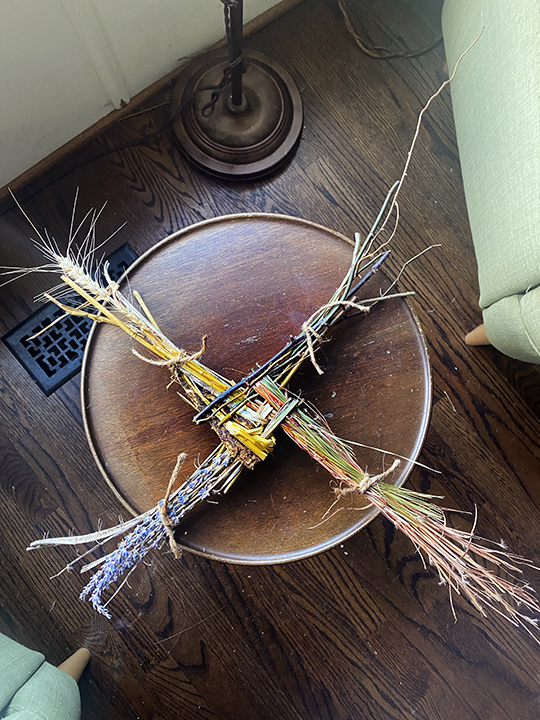
Brigid’s crosses are a traditional thing to make this time of year in Ireland and the UK. They are part of the observance of Imbolc which is one of the many names and traditions surrounding Midwinter. I have never really gotten very into these because crosses aren’t my thing, but upon further research they almost certainly predate the cross as a Christian symbol and were just repurposed by the church when the goddess Brigid became a saint. Most people recognize the four armed version, but there are literally hundreds of different ways to make these little weavings, many of which are hyper local to specific areas and towns. Most frequently they are made with rushes or straw, but the material used can also change depending on the area. I like the idea of weaving these with whatever is local in your area, because they then become about your place and home. Brigid is the goddess of the hearth and home (amongst many other things..) so these little weavings were remade each year at Midwinter (Imbolc) and left on the hearth to protect one’s home.
I love the Wheel of the Year because of the way it measures, observes and celebrates seasonal changes in nature in cultures all around the world. I am not usually terribly interested in deities or more religious observations, but Brigid is interesting to me because she is such an obvious personification of of the seasons. And old woman in teh winter she becomes a young woman in the spring and wakes up the earth with her green cloak. She is the goddess of the hearth, light, poetry, art, magic, the forge and childbirth. There are many ways to connect with that, even if like me your interest is secular and rooted in nature.
As I was trying to decide what to make my weaving from, I was also thinking about how some suggest that the four points actually represent the four elements. I decided to lean into that and researched materials that are associated with the elements. I am also a little confused by elemental associations and there is always contradictory information. I also find that they almost never include plants that are native to the Americas. So I went a little rogue on some these and chose associations that made sense to me. You also need to think about what has nice woody stems and will be a strong weaving material for this project.
- Air: Lavender & Mugwort. Lavender is traditionally associated with air and that made sense to me. Mugwort was listed for nearly every element, but as soon as I saw it it seemed so obviously air. It’s lacy and airy looking and it aids in dreaming.
- Water: Willow & Rose. Willow loves water so that one felt obvious. I also have some swamp roses that love boggy conditions so I grabbed some of them too.
- Earth: Burdock Root & Straw. I was determined to use a root because of teh obvious connection to earth. The ground is frozen though so this ended up being a bit of a debacle. I got one out, but not sure it was worth it. Straw was on a bunch of elemental list and felt suitably earthy to me.
- Fire: Pine, Sumac, & Little Blue Stem. Pine is a flammable resin filled wood so that felt right to me. Sumac I’m not sure I found on any lists but is a pioneer species after fires. Little Blue Stem is a North American native grass that isn’t on any lists, but it turns a fiery orange in the winter and was speaking to me so I added it at the last minute.
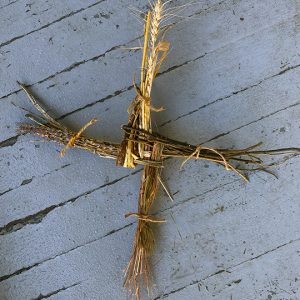
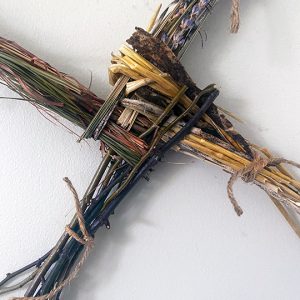
Brigid Weaving
You can choose your own plants that are meaningful to you for your weaving, just look for things that have sturdy, but flexible stems and are reasonably long. You can use lots of different materials like i have here or just choose one type which also looks beautiful. The type of material you use will to some extent dictate how many pieces you need, but starting with 16 pieces a good baseline. I needed less for the elemental weaving (many different materials, some of teh quite thick) and more for another weaving I did that was just grass.
Materials:
- weaving materials 12-18 inches (ish) You can use grasses, thin green (freshly cut) branches or anything with a long woody flexible stem.
- twine
Method:
First soak anything that is dry in a shallow dish so it will bend more easily. Grasses and thinner material will just need a few minutes, thick stems like lavender may need as long as ten minutes.
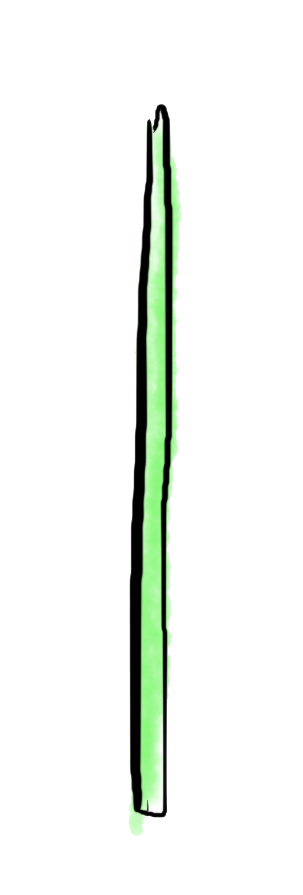
Start with a straight stick (or grass or whatever.) I have color coded these drawing so can keep track of which piece goes where– the colors have nothing to do with different materials.
Now wrap your second piece (orange) around the first (green), bending it in half at the midpoint of the first piece. Turn it to the left so that the orange piece is now on top.

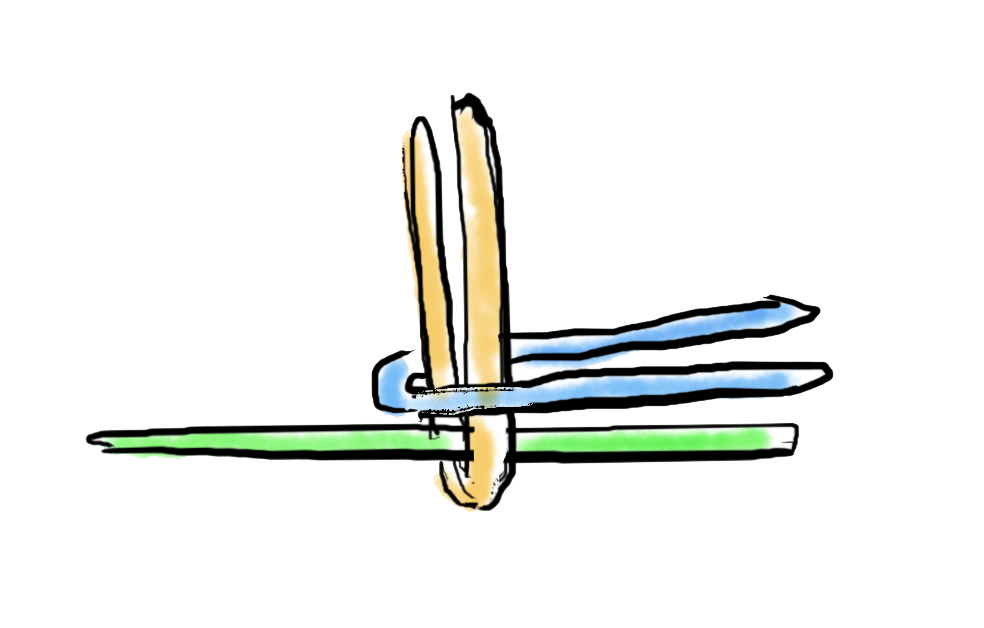
Take your third piece (blue) and bend it in half around the two orange ends. Rotate it to the left again so that the blue pieces (and the green) are facing up. Hold on to the blue/ green pieces to keep everything locked in place.
Now take a fourth piece (purple) and wrap it around the blue and green pieces. Once again rotate to the left so that the purple piece is facing up. Hold on to the purple piece to keep everything locked in place.


The fifth piece (red) will now wrap around the purple piece and join the last green piece. You now have 4 “arms.” Keep rotating to the left and adding new pieces in the same way until you like the finished size. You are creating a squarish weaving with four arms sticking out from the corners.
Once that cebter weaving have reached a good size, tie off the arms with the prepared twine to hold everything in place.

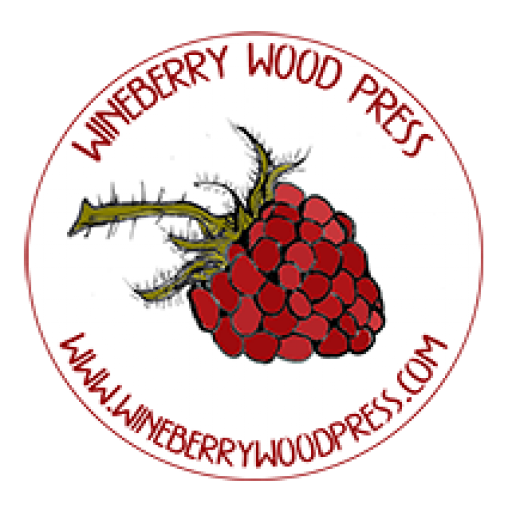
I too weave my cross with elemental representations. But mine are with colored strips of paper. I love how you have reframed its construction with native plants. It’s so important to honor not only where we come from but where we are.